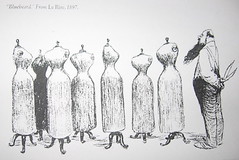At the Hemlock
When Brian began playing Keeril Makan's Voice Within Voice, I suddenly heard that same physical intimacy as I hear in my favorite singers, where the whole body participates in the music making process, and the expressive sound quivers like a living piece of that body. The synthesis of human voice and woody reed produces squawks and squeaks as embarrassing as a middle schooler's changing warble, and the expressive intention seems similarly open and unapologetic. These effects are not just a catalogue of sounds "for show," but rather, they allow the performer to deliver the music in numerous embodied ways, from the air in the belly, through the reed and mouthpiece, and into being in the room with the audience. The saxophone becomes an extended vocal superstar, a caricature of some pompous, five-octave facher. Floaty sighs and squeaks sound as risky as (and maybe even more expressive than) a coloratura's high F-sharp and seem impossibly related to the sometimes voiced and sometimes airy bursts, pops and farts down in the nether-range of the instrument. The culminating effect is such a personal offering--not, I should clarify, of emotion, but more literally, of physical music--that Brian's performance seemed appropriately suited to the small back room of the Hemlock. (Yes, it was damn noisy, but I can not imagine the nuances of physical intimacy delivering as well in a more traditional "hall.")
As a pianist, I am perhaps highly sensitized to the physical manifestation of sound, since the sounds I produce seem held at quite a distance from my body. Once, in the middle of a lesson, a piano teacher picked up a pencil and tapped the eraser from key to key. She said, "I can play this Bach with a pencil. Now you tell me, what's the difference between you--your fingers--and a pencil? Why should I listen to you when I can listen to a pencil?" (That was one of those go-home-and-sob-for-hours lessons.) There are two camps of musicians: those who use the breath and those who touch. (Those who play laptop or any stringed instrument are, I think, in the latter camp with us pianists and percussionists.) What we all have in common is how we use our ears. Lately, I find my ear straining to find ways to embody the music, to flow with the breath, to ... be more like a singer.
Well, the Brink Series never fails to give me something to mull over. Dorsey Dunn wrapped things at the laptop, creating three varied soundscapes sourced from samples of his own saxophone playing. Reedy melodic figurations yielded to beats and drones and a random sprung guitar string. In a way, Dunn provided a thoughtful concluding commentary to Brian's earlier set. Thanks for a great evening, guys.
continue reading...
 The second form was
The second form was


